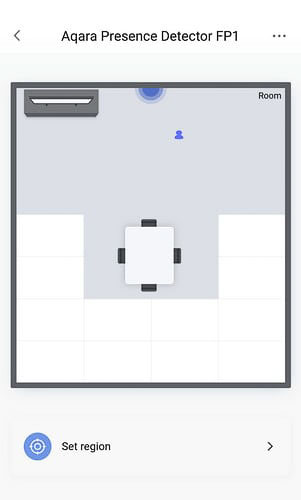The recent announcement of the Aqara FP1 presence sensor has generated significant excitement within the Home Assistant community. Unlike standard passive infrared (PIR) sensors, which detect motion, the Aqara FP1 detects presence by sensing even the smallest movements, such as breathing. Home Assistant Core version 2022.7 will introduce native support for the Aqara FP1 to ZHA (Zigbee Home Automation). This update aligns Home Assistant’s Zigbee solution with Zigbee2MQTT, which already supports the Aqara FP1. The main challenge for the community is now finding the product in stock.
Contents
How Does the Aqara FP1 Work?
The Aqara FP1 operates similarly to how a bat navigates in the dark. While a PIR sensor detects infrared light from objects within its range, the Aqara FP1 uses a mmWave radar sensor to detect the smallest movements. This capability allows the Aqara FP1 to detect presence, as even minimal movements like breathing will trigger it. However, this sensitivity also has downsides. Besides humans, it can be triggered by a fan, an open window, or a pet, limiting its practical use. Aqara offers a partial solution to this issue.
When paired with an Aqara hub and configured through the appropriate app, users can define detection regions. This feature helps reduce false positives by only selecting regions that remain motionless without any person present.
Another downside of the Aqara FP1 is its power consumption. Unlike a PIR sensor, which can be powered by a button cell for over a year, the FP1 needs to be connected to the mains.
Currently, Zigbee2MQTT does not support regions, and there is no mention of this feature in the Home Assistant pull request. However, developers of deCONZ appear to have found a solution for region support, as noted in their issue tracker. Since the code is open source, it is hoped that this functionality will be migrated to Zigbee2MQTT and ZHA soon.


Alternatives to the Aqara FP1
One of the greatest challenges with the Aqara FP1 is its availability. Since its release, it has been incredibly rare and quickly sold out. Fortunately, there are some alternatives to consider.
For those who enjoy tinkering with ESPHome, there are many projects detailing how to set up an ESP8266 or ESP32 with an off-the-shelf mmWave presence sensor. However, this option does not offer the same out-of-the-box experience as the Aqara FP1. If you prefer using mmWave without tinkering, you will need to wait.
Another approach to achieving similar results is by installing room-assistant on a Raspberry Pi or Raspberry Pi Zero and integrating a Grid-EYE or Omron D6T sensor. These thermopile sensors measure a matrix of temperatures in front of their lenses. Although their functionality is different from a mmWave radar sensor, they can achieve similar results by detecting presence rather than just large movements. The downside is the need for tinkering and the fact that the field of view is quite narrow, which might not suit all needs.
Conclusion
The addition of native support for the Aqara FP1 in Home Assistant Core 2022.7 is a significant update for the community. While the sensor's advanced capabilities provide more accurate presence detection, its availability and some limitations remain challenges. Alternatives such as ESPHome projects and room-assistant integrations offer viable solutions, albeit with some additional effort required.
For those interested in presence detection, exploring these options can provide valuable insights and improve their smart home setups. As technology evolves, further enhancements and solutions are expected, making home automation even more efficient and user-friendly.
